Black Mental Health
Spring/Vol. 7/2023
On Racial Ambiguity And Mental Health
Research shows people of mixed race – particularly those dealing with the issue of not being Black enough –are more likely to report a mental health illness

Plugging The School-to-Prision Pipeline
Parents and mental health professionals play crucial roles in altering the trajectory of students’ lives
TRIPPING TOWARD WELLNESS
Use of ketamine for those with treatment-resistant depression grows
Mental health professionals provide support to clients coping with a toxic work environment
When Company Culture Is Contaminated
TODAY
8 TH ANNUAL SYMPOSIUM

Invites your organization to participate in its 8th annual Black Mental Health Symposium (BMHS). This event is the first of its kind and draws hundreds of attendees, including educators, practitioners, community leaders, and students. Aligning with an event that aims to reduce stigma associated with mental illness, increase access to care, and improve the wellness of Black communities is an excellent opportunity for your organization to make a difference. Moreover, the Symposium connects you to key decision makers with the valuable resources your organization provides. You will find that the Black Mental Symposium is a perfect venue for your company to demonstrate its commitment to providing the education, products and services mental health professionals and future leaders need.
• 48 sessions
• 1 dynamic keynote address

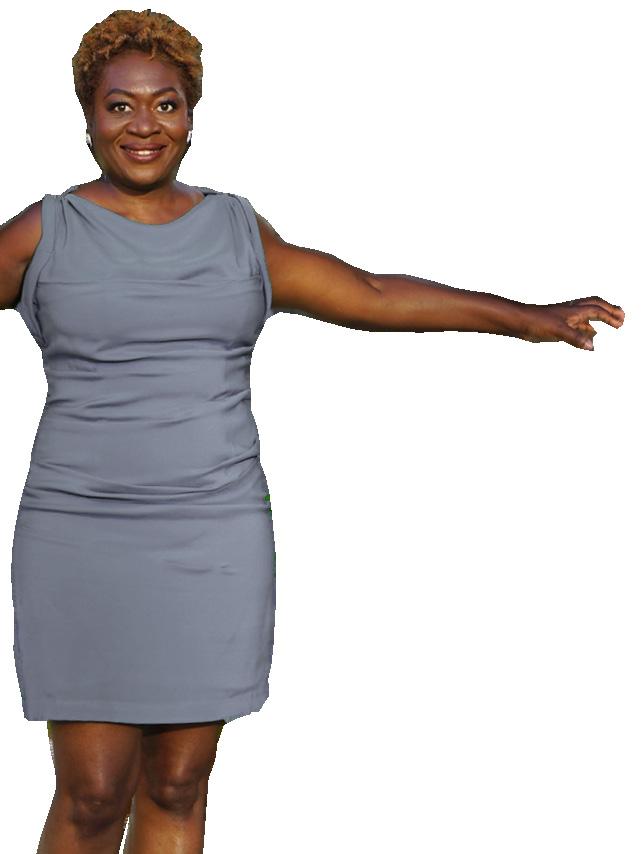
• State of Black Mental Health panel discussion
• opening acts
• For the Culture Cookout
• Up to 12 CE credits

HEALTH
BMHS BLACK MENTAL
LEARN | LEAD | LIBERATE
SEPT. 28-29 9AM-5PM EST Clickable for Digital Magazine Only
Black Mental Health Today
Spring / Vol. 7 / 2023
6
WHO’S WHO IN BLACK MENTAL HEALTH
Notable professionals across the country employ their expertise and experience to help others
14 7 17 16
WHAT DOES YOUR CREDIT SCORE SAY ABOUT YOU?

Age may be nothing but a number, but your credit score is much more than that
Black Mental Health Today
Black Mental Health Today is a print and digital publication produced four times a year.
Publisher
LaTonya Summers Senior Editor
Constance Brossa Creative Director
Marion Nathan Summers
Contributing Writers
Dwayne Buckingham
Chasity Chandler
Anna Dimond
Vanessa Infanzon
Nedra Rhone
Rudri Patel
LaTacia Ruff
Letters to the Editor: BMHT
Black Mental Health Today
6999 Merrill Rd STE 2-141 Jacksonville, FL 32277 connect@ifbmw.org
4 MAJOR BENEFITS OF PURCHASING RENTAL PROPERTY
Real estate offers multiple opportunities to boost your net worth
‘PLAYING A NEW GAME: A BLACK WOMAN’S GUIDE TO BEING WELL AND THRIVING IN THE WORKPLACE’
Tammy
Advertise Subscribe
Get your quarterly copy of Black Mental Health Today! Go to our website’s contact page: https://ifbmw.org/bmht and fill out your “Subscription Request” today!
FIGHTING FAIR: THE ULTIMATE COUPLE’S CHALLENGE
is
The key to stop viewing your partner as the enemy or the competition
Black Mental Health Today provides a unique opportunity for advertising. Advertise in our publication to have your products in front of our exclusive base of savvy and optimistic consumers, who are looking for distinctive and specialized products like yours! For rate information, email us at: connect@ifbmw.org.
CONTENT
Lewis Wilborn
a retired licensed professional counselor, clinical supervisor and counselor educator
Black Mental Health Today
ON RACIAL AMBIGUITY AND MENTAL HEALTH
Research shows people of mixed race – particularly those dealing with the issue of not being Black enough – are more likely to report a mental health illness

9 19 24
PLUGGING THE SCHOOLTO-PRISON PIPELINE
Parents and mental health professionals play crucial roles in altering the trajectory of students’ lives
12
WHEN COMPANY CULTURE IS CONTAMINATED
Mental health professionals provide support to clients coping with a toxic work environment
RACISM, HOUSING POLICIES AND MENTAL HEALTH
TRIPPING TOWARD WELLNESS
Black Mental Health Today Spring Edition / 2023 / Volume 7 4 https://ifbmw.org/bmht
Photo Courtesy of Adobe Stock
Use of ketamine for treatment-resistant depression grows 22
Spring / Vol. 7 / 2023
Legacy of discriminatory practices exacts a toll on Black home buyers and renters
Letter From the Publisher
This spring season is wicked. It came in early and with full intention to force winter to loosen its icy, cold grip. From the way I’ve been sneezing and constantly wiping at my running nose and eyes, I thought I had COVID-19. Yet the allergy symptoms pale in comparison to the way Florida’s politics make my skin crawl. I had the pleasure of marching and protesting with the Reverend Al Sharpton last month to demand that Governor DeSantis and his cronies let Black history go. Weaponizing Black History for political gain is not only a risk to Black America, but the world. This world would be in its primitive state if it were not for the genius of Black people.
With an eradicated history, I am afraid that the self-concept of Black children will be compromised. Access to Black history brought me back to myself after years of assimilation and believing that white things were better for me. I look forward to sharing my journey with you when my memoir, Black Again is

Black Mental Health
Black Mental Health


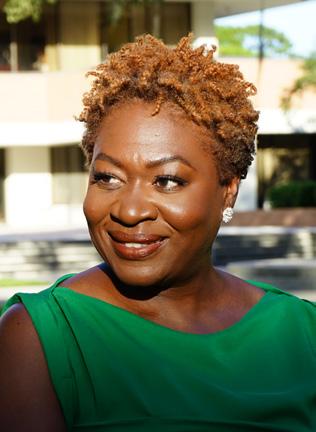
released in September. Until then, I can’t wait for you to read our cover story, Black Enough, on page 22. Children need our advocacy, and I’m hoping our article on “Schoolto-prison Pipeline” on page 9 lead you to effect change for them, for us since they are our future. By the time today’s children enter theworkforce, I am hoping we will have done away with toxic workplaces. Let me introduce you to a couple of people who are fighting toxicity at work with the article, When company culture is contaminated on page 12.

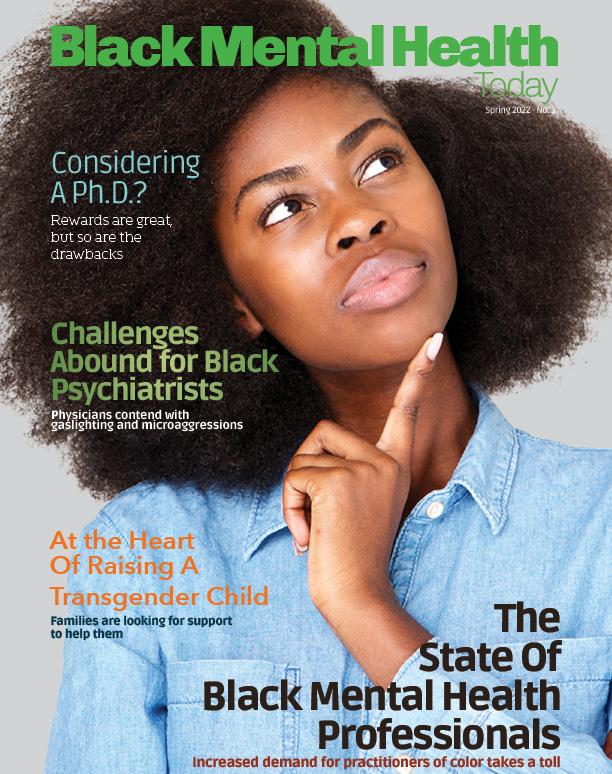
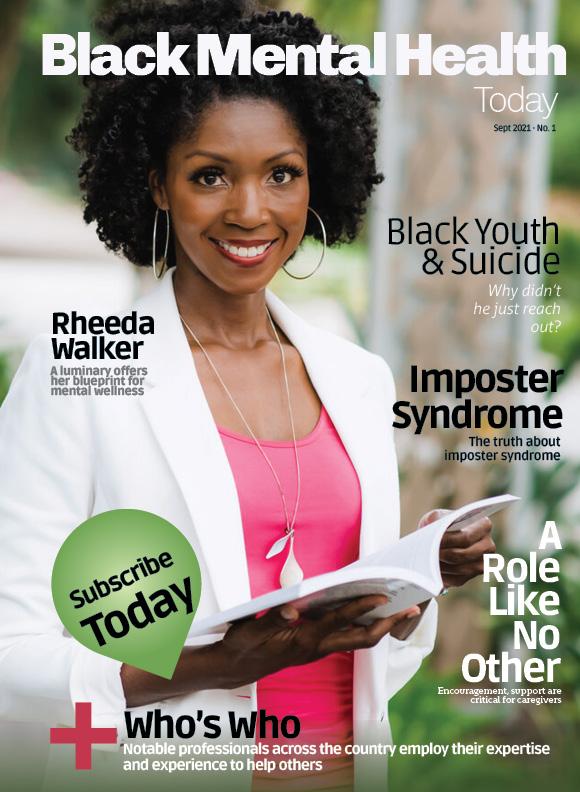
Before I let you go, I want to thank you from the bottom of my heart for supporting Black Mental Health Today magazine. Your subscription to this publication sustains and keeps us. Holding this magazine in your hand is evidence of your amazing support. We love supporting you and promoting mental wellness among Black people.
Thank you!
Black Mental Health Grit Over Glamour Helper or Victim? Self-care is about more than lounging Domestic Violence at the hands of intimate partners is largely unrecognized. Notable professionals across the country employ their expertise and experience to help others The truth about imposter syndrome Dr. King Davis Ensuring That History Doesn’t Repeat Itself Today Who’s Who ...injustices against Black people are no secret. SPRING 2022
2021
2021
FALL
WINTER
Play Therapy And Black Children How To Get Black People Into Therapy Legacy Of The Slave Trade Experts offer prudent advice for overcoming entrenched aversion EXAMINING A SYNDROME THAT SHAPES GENERATIONAL ACTIONS AND BELIEFS Religion and therapy The intersection between the Black church and mental health Why it’s important to modify counseling methods TODAY Fall/Vol. 5/2022 FALL 2022 SUMMER 2022 Behind Invisible Bars LEADING WHILE BLACK Hard Lessons From The Pandemic Those hired to spearhead DEI changes often do so professional Its ultimate impact on children and educators of color is still unfolding Aftermath of Dismantling Roe vs. Wade Advocates for Black women call for the creation of allies and partnerships to combat barriers to service Families – especially children – of the incarcerated suffer in silence when loved ones are imprisoned TODAY Winter /Vol. 6/2023
WINTER 2022
ARCHIVE PUBLICATIONS
Black Mental Health Today Spring Edition / 2023 / Volume 7 5 https://ifbmw.org/bmht
LaTonya Summers, Ph.D.
Don’t let your credit score say things about you that don’t align with who you are.

Mind & Money / WHAT DOES YOUR CREDIT SCORE SAY ABOUT YOU?
Article by Chasity Chandler Photo courtesy of Pexels.com
Credit is a double-edged sword in communities of color. Discussion of finances, credit and creating a substantial path to wealth and independence are not part of most families’ conversations. I’d like to account it to a lack of knowledge. But shifting your ability to create wealth is possible. They say when you know better, you do better, so let’s delve into that.
The financial sector is not my area of expertise, so I leaned on an expert in this field: Janeil “The Financial Pilot” Pierre, CEO of Sapphire Credit Consultants in San Antonio, Texas. Her knowledge on the topic is really extensive.
“People with higher credit scores typically tend to be more confident and self-assured,” says Pierre. “Good credit is a sign that a person is financially healthy, and financially healthy people have better cognitive function. They tend to think more positively when faced with challenges because they don’t have to worry about the outcome – even if they don’t have the cash, they have the credit to cover that untimely expense.
“They travel differently, as they have access to some of the best credit cards on the market. Once they learn how to leverage their good credit, they also spend and invest differently. We can be more like them by first understanding how credit works, fixing the errors on our credit reports, building up our credit profiles and treating good credit like the asset it is. Because like the saying goes, ‘Cash talks, but credit holds conversations.’”
Pierre provided the following tip to improve your credit: The No. 1 way to improve your credit is to know what’s in your credit report. Pull a copy of each of your credit reports from sites such as annualcreditreport.com and look for errors. Once you’ve identified errors, you have a right to request that the credit bureaus update or delete the information.
Your credit score is used to determine if you’re a person of character, worthy of the ability to purchase things like cars, houses, etc., and can also keep you from getting the job you’ve dreamed of. We don’t always understand this as teens and young adults. The decisions we make in our early adult years are vital and determine how we will be viewed for years to come. Imagine if financial literacy was offered in underrepresented communities, at little or no cost, how it would change the face of the financial landscape. The knowledge we have would increase and the power would be exponentially in our favor.
It’s not too late until it’s too late. Don’t let your credit score, which generally ranges from below 580 (poor) to 800plus (excellent), say things about you that don’t align with who you are. Grant yourself forgiveness for the financial decisions you may have made. After all, wealth is health, and we want that in all areas of our lives.
Chasity Chandler is CEO and owner of the Center for Sexual Health and Wellness in Florida, New Jersey and Massachusetts. She is a relationship and sex therapist with more than 20 years of experience in the helping field.
Age may be nothing but a number, but your credit score is much more than that
Black Mental Health Today Spring Edition / 2023 / Volume 7 6 https://ifbmw.org/bmht
Clinical Entrepreneurship / 4 MAJOR BENEFITS OF PURCHASING RENTAL PROPERTY

― Real estate offers multiple opportunities to boost your net worth
Article by Dwayne Buckingham Photo courtesy of Unsplash.com
Many mental health professionals are intimidated by the thought of acquiring rental property. However, there are several options (multifamily properties, real estate development, commercial real estate, etc.) for becoming a real estate investor. I found that purchasing a single-family home was easiest, and I immediately learned about four major benefits from the transaction.
Passive income
Passive income is unearned income acquired with little-to-no labor. After purchasing rental property and getting a tenant, you can watch your bank account grow. For example, I bought my first rental house in my hometown of St. Louis, Missouri, for $50,000, which resulted in a $350 monthly mortgage payment. I placed the property into Section 8, a housing choice voucher program for lowincome households, and rented the property for $875, generating passive income of $525 monthly. I used my passive-income profit to pay off the home within four years. I am currently earning $1,100 per month in passive income due to rental leasing increases.
Tax benefits
You can take advantage of tax benefits the IRS gives to real estate investors. As a rental property owner, you can deduct the following expenses as tax write-offs:
• Insurance and property tax
• Rental property repairs
• Property management and leasing fees
• Utilities paid by the owner
• HOA fees
• Legal and professional fees
• Mortgage interest expense
• Travel expenses to visit an out-of-town property (a big tax benefit for remote real estate investors)
Owning a rental property not only generates passive income but enables you to reduce your IRS tax burden. And the higher your
tax bracket, the more you gain from having rental property.
Inheritance, wealth building
With so many benefits associated with purchasing rental houses, the most significant benefit for me is the opportunity to leave an inheritance for my children. After learning about the real estate business, I reinvested my profits and purchased two additional properties for my son
Continued on page 8
Black Mental Health Today Spring Edition / 2023 / Volume 7 7 https://ifbmw.org/bmht
Continued from page 7
and daughter. The secret to leaving an inheritance and building wealth is to create a money-making and wealth-building cycle that includes buying a rental property, making a profit and reinvesting the profits.
A global pool of renters
You can place the property on the market as a rental space on platforms such as Airbnb or Vrbo. Becoming an Airbnb or Vrbo host is a great way to meet new people and spend more time with your loved ones while also diversifying your investment portfolio.
Now that you have learned about the major benefits of purchasing rental property, you’re probably wondering where to find an investment property. Fortunately, resources like Zillow, Redfin and
local MLS listings are great places to start.
How and where can you find affordable rental property? The answer is simple: Visit your local government housing administration website or office to see if they have a Land Reutilization Authority listing. The LRA receives titles to all tax-delinquent properties not sold at a sheriff’s auction or sale. It also receives titles to properties through donations. The tax-delinquent properties are listed under the LRA and sell for $1,000 up to $60,000. You can attend a public meeting and purchase the property available for sale. After buying a “fix-up” property, you are given a specific time frame to bring it up to the housing code and place it on the market for rent.
As you look to grow your net worth
as a mental health professional, consider purchasing rental property.
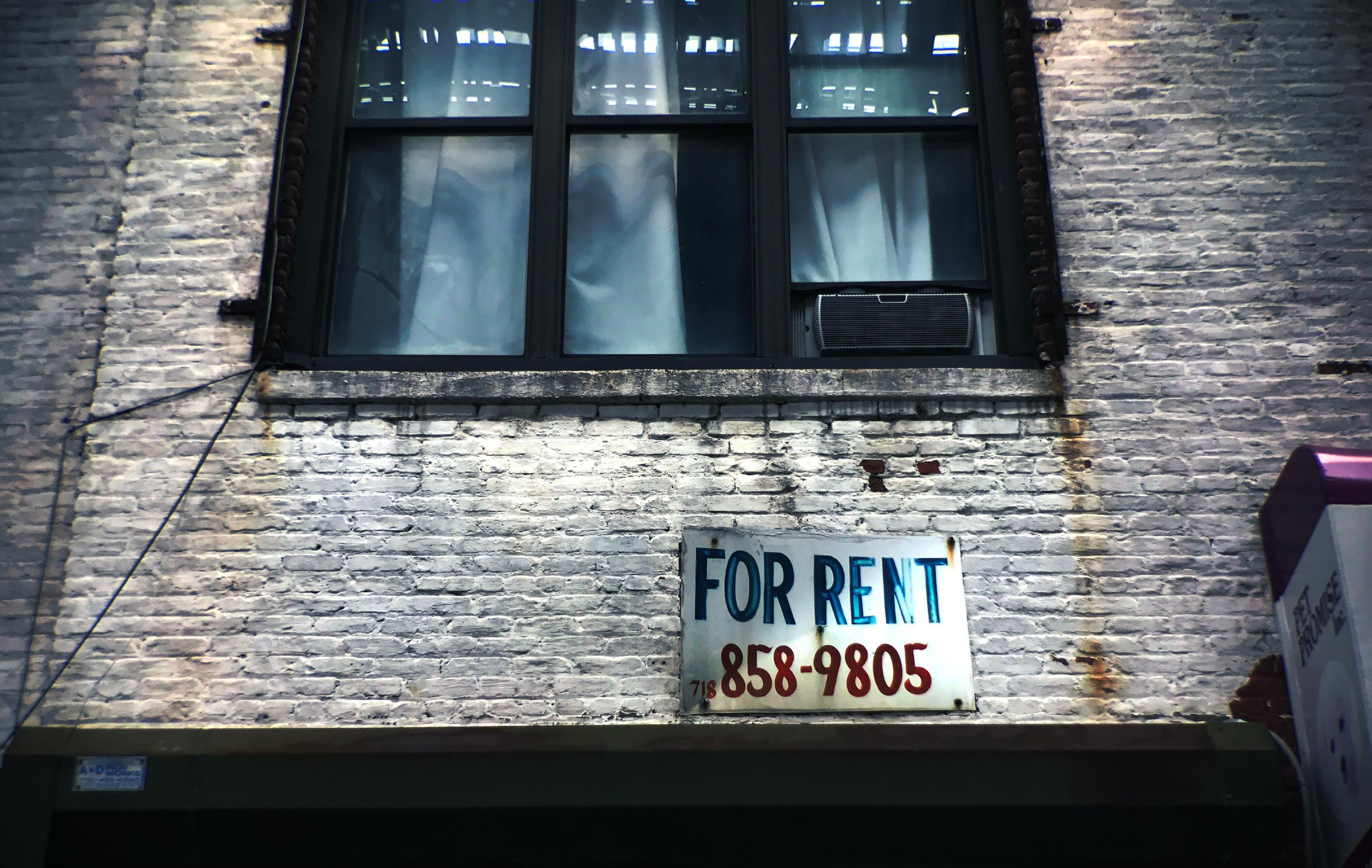
The recommendations shared in this article are for informational purposes. Please consult with a licensed real estate professional, lawyer or tax professional for specific guidance.
Dwayne Buckingham, Ph.D., is a clinical psychotherapist, decorated veteran and business owner, ICF-certified coach, consultant and CEO of Buckingham Consulting Group. You can reach him at @DrDwayneBuckingham on Facebook, Instagram and Twitter, and drbuckingham.com or buckinghamcgroup.com.
Photo courtesy of Adobe Stock
Black Mental Health Today Spring Edition / 2023 / Volume 7 8 https://ifbmw.org/bmht
FEATURE / PLUGGING THE SCHOOL-TO-PRISON PIPELINE

Parents and mental health professionals play crucial roles in altering the trajectory of students’ lives
Article by Anna Dimond
It has been more than four decades since researchers first raised concerns regarding disproportionately high rates of school suspensions for Black students compared to their white peers. At the time, the rate of Black youths getting suspended from school was about 6%.
Since then, that racial gap has only gotten bigger, and public schools’ approach to punishment has grown more aggressive, including the addition of a zero-tolerance policy for breaking school rules. By 2014, Black students were three times as likely to be suspended as white students, starting as early as preschool.
Missing that much time in class not only affects students’ mental health, stability and social connections, but also, often, the trajectories of their entire lives. Black youths have increasingly gone from being students with homework assignments to inmates with criminal records. This is the school-to-prison pipeline, a dynamic that Clinique Chapman, associate director of the Restoring Promise initiative at the Vera Institute of Justice in the D.C. Metropolitan area, calls a “crisis.”
The pipeline, she says is “the manifestation of systemic inequalities in the ways in which our schools are policed.”
“Our children aren’t (allowed) to remain children for very long. There’s this disproportionality between the rate at which Black children –especially those from underserved neighborhoods and schools – find themselves in prison. Our youth are
having … life-altering contact with the justice system. The education system really holds a great deal of responsibility.”
The pipeline, says Bettie Ray Butler, is “the parallel between the educational and juvenile justice system where
Black students and Black youth are being targeted, more or less for subjectively defined offenses.” Butler is associate professor of Urban Education at UNC Charlotte in North Carolina. She also serves as the university’s program director of the Master’s of Education (M.Ed.) in Urban Education.
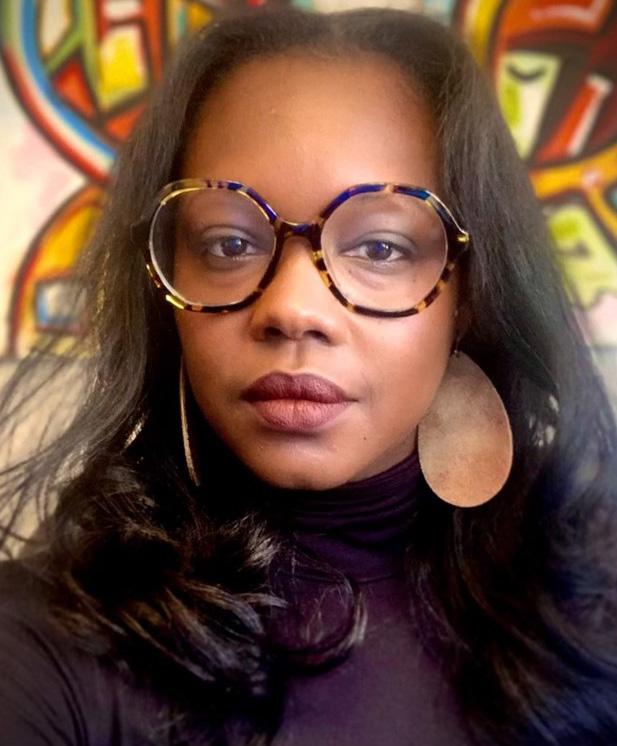
“It’s pushing them into either the juvenile justice system or to incarceration. It’s detrimental to their lives and to their futures.”
The school-to-prison pipeline is a systemic problem encompassing education, criminal justice and policy. But there are ways parents can be proactive and advocate for their children. Likewise, for mental health professionals, how they approach the youths and families they work with can enhance their efficacy, and potentially help curb the pipeline itself.
Being part of a team
Chapman and Benton suggest that parents think of themselves as part of
Continued on page 10
Clinique Chapman
Photo courtesy of Clinique Chapman
Photo courtesy by Adobe Stock
Black Mental Health Today Spring Edition / 2023 / Volume 7 9 https://ifbmw.org/bmht
a team that advocates for their child at school. Sometimes a power dynamic can emerge, in which teachers and administrators make decisions about a child in the absence of context or information about them.
Being proactive as a parent can start before a child even attends school. Chapman recommends seeking out third-party evaluations and opinions about any school before enrolling their child. That can help families feel empowered from the get-go, instead of feeling like victims of a system that, she says, “weren’t designed for the success of Black children and people of color.”
to different parents and, ideally, teachers and administrators are flexible, too. That means sharing a cell phone number and telling a teacher the best way to contact them, which might be a text message instead of an email. That could mean asking to attend PTA meetings over Zoom.
“It’s important that communication is clear and demonstrates that your child is loved and has a community behind them,” says Chapman. “You never want them to feel like they’re advocating for themselves.”
Building a ‘web of community’
The ways a mental health professional approaches systems, students and parents is crucial. They’re working at macro and micro levels and, says Chapman, so it’s important to think about both.
At the macro level, Chapman encourages mental health professionals to question and challenge the system in which they’re working, and to do so through the lens of racial equity. Is the system, she says, one that is anti-racist? How is the system working for all children, not just those on our caseload? Is the school’s disciplinary policy actually good policy?

“They’re asking, ‘What’s happening here, in this situation?’ ‘What are the unique details of this situation?’ And then they identify and co-construct solutions with the parents: ‘What is it that you need?’ And then using their professional judgment to offer what is deemed appropriate.”
“The (mental health professionals) that I’ve seen do this well. They know the community, and they know the community well. They are really the liaison between the parents and the students and the school. They’re connecting folks, building this web of community.”
Focusing on solutions
Amid swaths of research about the school-to-prison pipeline, there are also myriad ways to focus on solutions. The way forward that Butler and Chapman recommend relies on mutual respect, communication and context.
An open framework, said Butler, offers a voice to everyone: parents, students, teachers and, sometimes, other students involved in a disciplinary action.
Once parents pick a school, says Butler, the start of the academic year is a good time to reach out to a child’s teacher and share information about their specific needs and family context. For example, in what type of environment does a child thrive? Are there tools, like technology or books, with which a child does their best work? Are there behavioral accommodations that should be made? Finally, are there aspects of the child’s family background or circumstances that would help inform a teacher about that child?
“Advocacy,” she says, “starts with communication, bottom line.”
After the school year begins, Butler and Chapman say, continuing to be present in the child’s life at school is also important. Being present, however, can mean different things
At the micro level, Butler and Chapman agree that creating space for open discussion about a conflict and giving each person in the meeting a voice is important. In the criminal justice setting, that approach is restorative justice. In school settings, Butler encourages what she calls restorative practices. In all cases, says Chapman, all participants are addressing conflict through the lens of harm and healing the harm.
The key to that is avoiding a onesize-fits-all approach.
“Some folks (are) looking for a silver bullet,” says Butler. “I push back a little bit because there is no silver bullet there. There are no direct strategies. Everything is contextspecific.
For Chapman, it’s in that space where communication can happen, and parents, students and mental health professionals can have difficult discussions and, ultimately, reckon with the past.
“It’s (about) having hard conversations in the face of adversity,” she says. “We need culture change within our schools. Culture change requires uncomfortable conversations. And being OK with that, not running from that. Because that’s where progress will be.”
Anna Dimond is a journalist and creative based in Los Angeles, California.
Bettie Butler
Continued from page 9 Black Mental Health Today Spring Edition / 2023 / Volume 7 10 https://ifbmw.org/bmht
Photo courtesy of Bettie Butler
Your Ad Could Be HERE! Contact Sales: connect@ifbmw.org
Chanta Moore, a licensed professional counselor and an adjunct professor at online school Walden University, equates toxic workplaces to living in a place with contaminated air or polluted drinking water. Toxic workplaces –environments contrary to wellness and not well aligned with emotional, mental, physical and social needs of employees – have always been around, says the Houston resident.

Whereas ableism, racism, sexism and sexual harassment are typically easier to identify, toxicity at work may be subtle, Moore says. The signs can come in the form of favoritism, micromanagement, high turnover, tokenism, unrelenting workloads and limited-to-no opportunities for growth.
“Toxicity in the workplace is often divisive and systemic,” she says.
Impact ‘after you’ve clocked out’
Clients facing toxicity at work may enter a clinical setting with anxiety and depression, but symptoms such as dread, fatigue and hopelessness may also be present, Moore says. Clients often feel dissatisfied and stressed.
“It’s so pervasive it permeates nearly every aspect of life,” she says. “It’s not that you’re miserable for those eight hours when you’re in your office, but you’re also miserable even after you’ve clocked out. And it’s seeping now into other areas of your experience.”
Most clients will connect their dissatisfaction with work but may not have the language or the tools to attach the behavior to a feeling. Moore helps clients rewrite their narrative, acknowledging each experience is different and there’s no template for therapy. She helps clients “author” or tell their stories by asking:
• Where are you positioned in your life?
• How did you get here?
• What parts don’t work for you?
• What can you absolutely live with?
WHEN COMPANY CULTURE IS CONTAMINATED
Mental health professionals provide support to clients coping with a toxic work environment
by Vanessa Infanzon
• What needs to be changed?
Then Moore gives clients the opportunity to re-author their story.
“I think our first task is to name and give unique voice to the toxicity in the workplace,” she explains.
Moore is aware that not everyone can quit their job, so she helps clients
navigate employee assistance benefits such as coaching and short- and long-term disability to access all available resources. “We don’t want to minimize how powerful it can be to empower clients to be more assertive, to be more communicative about their grievances,” she says. “For some of them, it may be the first time
FEATURE
/
Tammy Lewis Wilborn
Photo of Tammy Lewis Wilborn
Black Mental Health Today Spring Edition / 2023 / Volume 7 12 https://ifbmw.org/bmht
Photo courtesy of Chanta Moore
they’ve stood up for themselves or asked for what they needed.”
Building skills for survival
Latesha Byrd is a certified executive coach and the CEO of Perfeqta, a talent development agency in Charlotte, North Carolina. She’s focused on solutionbased methods to help clients move forward and suggests, in certain cases, a client seek counseling to supplement their emotional growth. She likens the microaggressions seen in a toxic workplace to “poking at a small cut, and over time. It’s not a small cut anymore; it’s a large wound that’s going to take a lot of time to repair.
“(Microaggressions) are a huge impact on someone’s emotional safety.”
Clients become disappointed and resentful after noticing the signs of a toxic environment, which aren’t always evident during the interview process. Sometimes the company’s culture changes, becoming toxic. “They (the employee) start to internalize the microaggressions – ‘I don’t belong here, I’m doing something wrong,’” Byrd says. “That can diminish motivation, self-confidence. Therapists can help clients build the power to say, ‘Enough is enough. I am valuable to this company; my voice deserves to be heard.’”
Byrd identifies four skills for clients in a toxic work environment to develop: boundary setting, communication, conflict resolution and managing up. A therapist can assist the client to define where the toxicity is coming from, who is responsible and how to address it with a colleague, supervisor or human resources.
When a supervisor is toxic, unfortunately, the client may have to manage up – by oversee their own career, rather than rely on a manager to mentor and look for opportunities for advancement.
Importance of the intake process
Tammy Lewis Wilborn’s book, “Playing a New Game: A Black Woman’s Guide to Being Well and Thriving In the Workplace,” is based on her personal experience in a toxic work environment.
As a retired, board-certified licensed professional counselor and board-certified licensed professional clinical supervisor, she speaks around the country about mental health and wellness. She founded the Black Women’s Wellness Conference of New Orleans in 2018
“The reason why I wrote this book from the angle of the impact of stereotypes and specifically about the experiences at work,” says the Nashville, Tennesse-based author,
client doesn’t indicate their job is the reason for coming in for a visit, she recommends probing into what stressors are associated with the client’s job.
“In the initial intake session, it is very important to ask specifically about workplace experiences,” Wilborn says. “It really does open up an opportunity for clients who may not be seeking counseling for work to identify potential sources of stress. They might be coming in for a clinical issue, but the underlying causes might be workplace stress.”
Before developing a therapeutic plan, Wilborn always ruled out health issues for physiological symptoms such as headaches or migraines, sleep disruption and eating issues. She’d advise a medical consultation. Once medical issues were ruled out, Wilborn developed a treatment plan using cognitive therapy.
“The self-care is essential because it’s what goes out the window for people experiencing a toxic work environment,” she says. “It’s really important to identify the impact to one’s self-worth, to one’s selfperception, to one’s self-confidence, and replace any distorted types of thinking caused by negative experiences in the workplace with positive, affirming, empowering messages.”

“is because stereotypes have the ability to distort how people of color are seen and treated. And when those stereotypes are internalized, it also impacts how the individual sees and treats themselves.”
When Wilborn was practicing, the intake interview was an opportunity to ask about a client’s workplace. Wilborn suggests finding out the details of a client’s job: where, when and how long. Even if the
Vanessa Infanzon is a freelance writer in Charlotte, North Carolina, whose wideranging work has been published by regional and national media outlets.
Chanta Moore
Photo courtesy of Chanta Moore
Black Mental Health Today Spring Edition / 2023 / Volume 7 13 https://ifbmw.org/bmht
WHO
WHO’S IN BLACK MENTAL HEALTH
Notable professionals across the country employ their expertise and experience to help others
 By Rudri Patel
By Rudri Patel
Alfonso Ferguson had an epiphany during his senior year at the University of South Florida. “It wasn’t until my very last class in my very last semester of undergrad that I took a counseling course and fell in love, and it was really life-changing.”

This realization led Ferguson to become a licensed professional counselor and complete his doctoral degree in philosophy of counseling at Montclair State University.
Because of his Afro-Caribbean background, he says it’s important to “talk through issues from a culturally responsive lens.” Equally important is asking, “How do we create spaces for Black families to have these conversations without feeling judged?”
In his private practice in New York, Ferguson counsels queer BIPOC individuals and says it’s especially important to consider intersecting identities. “For me, it’s important to create an environment where they are heard, understood and validated.”
Devona Stalnaker-Shofner knows trauma – she was sexually assaulted in high school. “I worked with a counselor to get through that and knew counseling was something that I needed and wanted to do with my life,” she says. And she did by becoming a licensed professional counselor and an associate professor in the psychology department at Antioch University.
She also maintains a private practice and recognizes Black people “do have a distrust of organized medicine because historically they had not fared well when it came to institutions.” When she counsels clients, she “nurtures that relationship, so they are willing to take risks with me.” Addressing these risks, she says, “helps them make the changes that they want to implement in their lives.”
And she can relate to the process because she goes to therapy, too.
“I think this experience as a client helps me understand my patients’ journeys,” she says.
Licensed social worker and CEO of Cafe Social Work, Anjanette Young, feels “she was born to be a helper. It came naturally to me and led me into social work.”

Growing up in Mississippi, Young realized quickly that “nobody really talked about the different things that individuals may have been suffering with – what happens in our house stays in our house,” she says. Now, the mindset is different.
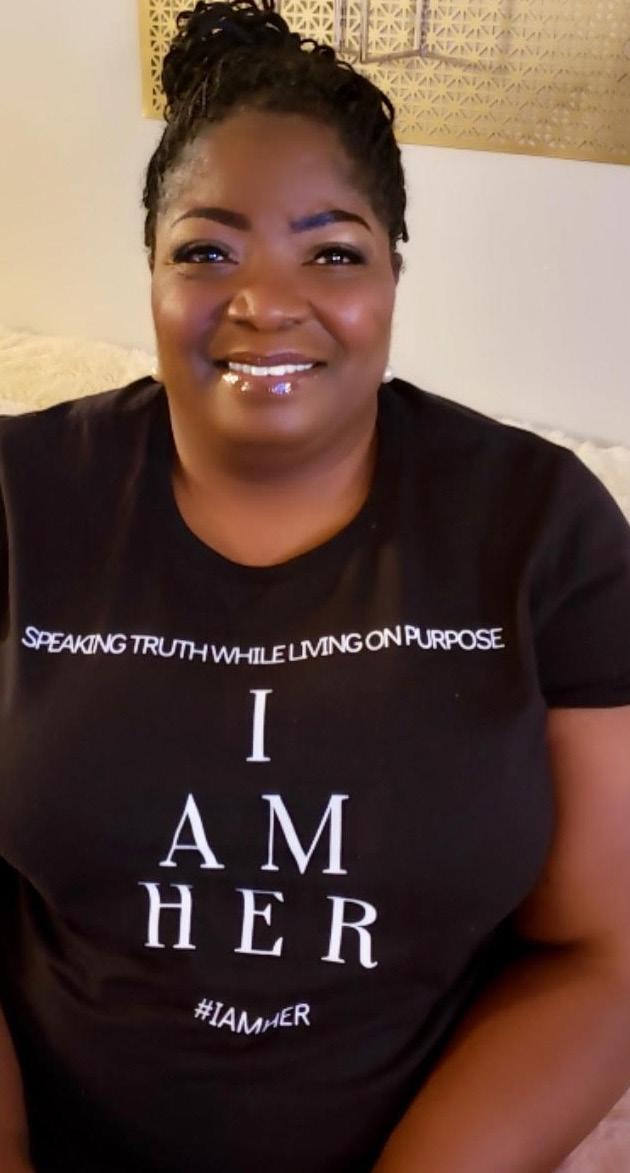
People are seeking therapy but need more professionals who look like them. “The person seeking help needs to find a therapist who understands my culture and what it feels to be a Black woman,” she says.
Young credits her civil rightsactivist grandmother for encouraging her to always care about her community, as well as introducing her to Jesus. “Those are the two things that matter most in my life.”
Clinical therapist Mark Viel thinks most people would benefit from counseling, based on his work with patients at The Synergy Health Center in Michigan. “People are suffering from anxiety, dealing with economic stress and trying to handle traumas,” he says.

Viel thinks more people are seeking help. “A big part of that change is technology and social media and being able to share their stories.” Black women are more open-minded about therapy, but their male counterparts generally “still struggle to avoid being labeled as crazy or needing assistance.”
Another obstacle, according to Viel, is many institutions are old and Western-focused. “That’s why many minorities feel uncomfortable in those places. I feel like they can’t be themselves. But we’re working to change that.”
DEVONA STALNAKER-SHOFNER ANJANETTE YOUNG MARK VIEL
ALFONSO FERGUSON
Rudri Patel is a former lawyer turned writer, editor and educator.
Black Mental Health Today Spring Edition / 2023 / Volume 7 15 https://ifbmw.org/bmht
Book Review/
A NEW GAME: A BLACK WOMAN’S GUIDE TO BEING WELL AND THRIVING IN THE WORKPLACE’
 Article by LaTacia Ruff
Article by LaTacia Ruff
Tammy Lewis Wilborn is a retired licensed professional counselor, clinical supervisor and counselor educator with 20 years of experience as a clinician. “Playing a New Game” is her inaugural book.
Through personal anecdotes, narratives from participants in her doctoral research and other resources, Wilborn shares her knowledge of the impact of racial discrimination in the workplace and how to overcome it. She grabs the reader’s attention with sad (because they are true) data on the leading causes of death of Black women of all ages and how many of those conditions are directly linked to adverse work experiences.
She further draws the reader in with existential questions and statements peppered throughout the book. For example, readers are challenged to reflect on, “The real question is what script will I write for myself now that the pen is in my hand”?
Such questions and statements are supported by the insights she imparts in a practical and solution-focused manner. For each actionable item, such as the promotion of self-care, Wilborn provides strategies that will teach clients to incorporate them into their normal routines. She does this while simultaneously correcting the misconceptions often associated with the concept.
Wilborn also defines and simplifies terms and phrases, such as “spirituality” and “protect your peace” that are well used but may be misunderstood. Clinicians and clients will love and appreciate how Wilborn educates her readers while supplying them with techniques to address the stigma associated with talk therapy and pharmacological treatment options; the various types of clinical providers, license types, educational requirements and
general areas of care offered; how to determine if a clinician is a good fit; the importance of boundaries (personal and professional); and the associated pitfalls when ineffective boundaries are in place.
As Wilborn suggests, coping occurs on a continuum. Her book will assist clients on their journey to mental wellness and provide counselors with strategies derived during her lengthy career as a practitioner.
LaTacia Ruff, Ph.D., considers herself a Chicago girl despite residing in North Carolina where she works as a licensed counselor. She’s on a mission to normalize mental health and debunk myths associated with mental health through her program Candid Conversations. Learn more at www. choose-ccc.com.
‘PLAYING
Black Mental Health Today Spring Edition / 2023 / Volume 7 16 https://ifbmw.org/bmht
LOVE & RELATIONSHIPS/
FIGHTING FAIR: THE ULTIMATE COUPLE’S CHALLENGE
The key to stop viewing your partner as the enemy
Article by Chasity Chandler Photo courtesy of Pexels.com
Relationships are tricky. There will be ups and downs, times you dislike one another and other times you consider throwing in the towel. Couples come to counseling for many reasons. One of the top reasons is related to communication. Partners want to feel heard, valued and that their feelings matter. This can be difficult when partners are focused on being right. This causes them to see each other as the enemy or competition as opposed to partners.
I recently spoke with Candice CooperLovett, Ph.D., a licensed marriage and family therapist, and owner and CEO of New Creation Psychotherapy Services in Atlanta, Georgia, about what couples should know about fair fighting. Here’s what she shared.
Understand one another
Understanding and agreeing are two different things. If each partner feels understood, it allows space for resolving the conflict in a courageous conversation. Often, couples mistake agreement for understanding. One can understand but not necessarily agree.
Understand the power of conflict
When done the right way, conflict should increase intimacy. It is an opportunity for couples to listen to
and hold space for one another as they are sharing disappointment or hurt caused by their partner. This is a form of intimacy that could assist in helping couples feel connected and vulnerable with one another.
Understand how to fight
Specifically, this means not “hitting below the belt,” especially during a vulnerable moment, because this will create division in the relationship. These experiences may cause a partner to fear continuing to bring their concerns or needs to the table as it may come up later as ammo in future arguments.
To add to those points, I think it’s important for couples to understand that miscommunication creates the greatest distance between partners. A lack of understanding breeds confusion and conflict, whether in silence or spoken. The best thing you
can do to improve your relationship is work toward bettering your communication and deepening your understanding with everyday, surface-level conversations as well as deeper, more impactful and higherorder conversations.

I instruct my clients who want to “learn to fight better” to instead learn the skills and tools necessary to navigate communication in a way that’s conducive to healthy communication. Communicating in this manner eliminates fights and the need to avoid hard conversations –which can help to develop a whole new connection within relationships.
Chasity Chandler is CEO and owner of the Center for Sexual Health and Wellness in Florida,New Jersey and Massachusetts. She is a relationship and sex therapist with more than 20 years of experience in the helping field.
A lack of understanding breeds confusion and conflict.
Black Mental Health Today Spring Edition / 2023 / Volume 7 17 https://ifbmw.org/bmht
F lorida Dream Home
Nathan Summers
(904)-652-5095
The professionals at Summers Home Group are dedicated to making the home buying process as smooth as possible for you. You can depend on us to provide expert advice and guidance through every step of the process, from finding your perfect home all the way to the closing table. With our extensive knowledge of the Florida real estate market, we’ll help you find your dream home – even in today’s competitive market. Let us show you what the path to homeownership looks like in the Sunshine State!

Scan QR Code
To search property from your mobile phone.
your
Let’s get
RACISM, HOUSING POLICIES AND MENTAL HEALTH
Legacy of discriminatory practices exacts a toll on Black home buyers and renters
Article by Anna Dimond
Photos courtesy of Danya Keene Nathan Summers Adobe Stock
Since the 1930s, a confluence of racebased policies and lending protocols have created longstanding barriers for Black Americans to buying homes. One of the first policies, redlining, effectively barred Black families from accessing homeownership – the primary way Americans build upward mobility and wealth. The legacy of redlining continues to impact access to housing and homeownership.
As of 2020, just 43.4% of Black Americans owned their homes. That’s nearly 30% less than that of whites, of whom 72.1% are homeowners. The wealth gap that redlining and other exclusionary, race-based
policies have created is also visible in the rates of homelessness among Black people. For those who rent their homes, rising prices and stagnant wages have bolstered housing precarity and put more pressure on household budgets.
Yet there’s another impact that barriers to homeownership can have– one that can’t be measured in market value or mortgage rates. Instead, it’s the stress, anxiety and overall harm to mental, emotional and even physical health that these barriers can create.

Housing precarity
“Housing is this foundation for our well-being, for our ability to take care of ourselves or get a job,” says Danya Keene, associate professor of social behavioral sciences at the Yale School of Public Health. “We think of all those things that lead to housing, but you can’t get anywhere if you don’t have a roof over your head.”
Keene researches how discriminatory housing and urban policies have inhibited housing access for non-white Americans and, in turn, impact health
equity. In her work, she’s seen myriad ways racebased policies and health intersect.
“You have this confluence of racist policies that have created barriers to homeownership,” says Keene. “Those barriers can be exacerbated by health vulnerabilities that are themselves the result of exposure to racism. When you’re sick, you can’t pay your mortgage and that contributes to housing precarity.”
That precarity isn’t just for people who may have homes but struggle to meet their mortgages. It also impacts people who rent, and perhaps can’t access homeownership at all.
“We’ve talked to a lot of renters who are just paying huge portions of their income on rent, and they’re just one teeny emergency away from falling behind and facing eviction,” says Keene. “There’s so much anxiety that surrounds it. People don’t sleep and they aren’t able to take care of their other health needs. It interferes with their parenting. With their diet.” And for some, she adds, it interferes with taking care
of existing medical needs, like diabetes.
“It’s not just because they can’t afford the medication or they don’t have a kitchen or they can’t buy fruits and vegetables, but also it’s bandwidth. They’re so emotionally consumed by the need to find housing or the need to pay for their housing, or the fact that they might lose their housing, that they don’t have any emotional energy left to devote to their diabetes management.”
In that way, says Keene, stressors around housing can compound other problems, and, arguably, create more stress.
Breaking down barriers
It’s for those reasons, in part, that in 2022 Nathan Summers founded Summers Home Group, within Florida Homes Realty and Mortgage. Growing up, Summers didn’t see many Black homeowners. He was raised by a single mother and didn’t realize he could live in a home of his own. It wasn’t until he left home for college that he began to see families who did.
Continued on page 20
FEATURE /
Black Mental Health Today Spring Edition / 2023 / Volume 7 19 https://ifbmw.org/bmht
Continued from page 19
“I didn’t realize how much homeownership meant to the ability to grow wealth,” he says. “I could tap into my equity. I could be in a home that’s safe, behind a gate. Or I could have police protection – people riding by just to make sure that we’re safe. There’s just so much value and access that I didn’t really know (about) until I actually got into the (real estate) business.”
Starting his own realty practice, says Summers, is one way he’s trying to help break down some of the barriers he’s seen.
“I wanted to be able to bring other African Americans and people like me to where they can also see their wealth grow through real estate,” he says.
As Summers continued to work as a Realtor, he also began to see the ways longstanding barriers to homeownership created stress for Black would-be buyers. Not only in practice, but in messaging. One client of his, for example, was worried about having her credit pulled for her mortgage application.
“They have a lot of questions and anxiety around even the credit because they hear the discrimination that is in home buying,” says Summers. “You hear about the discrimination when it comes to appraisals of homes.”
Another layer of anxiety, says Summers, can exist when a buyer is the first in their family to purchase their own home. Because of the historical exclusion of Blacks from homeownership, there’s often less knowledge about the process or tradition of saving for a down
payment. Finally, he says, the massive jump in rent prices nationwide have also hampered would-be buyers’ ability to save.
“When you look at data, you can see why there is such a difficulty when it comes to communicating this situation with homeownership (and Black Americans), because there are so many levels,” says Summers. Reports like the 2022 National Association of Realtors research regarding the racial gap in homeownership, he says, are “alarming.”
Focus on ‘the root cause’
For Summers, the way forward is twofold: Bring more Black people into the real estate field – in lending and banking –and educate more Black people about real estate. He hosts lunch-and-learn
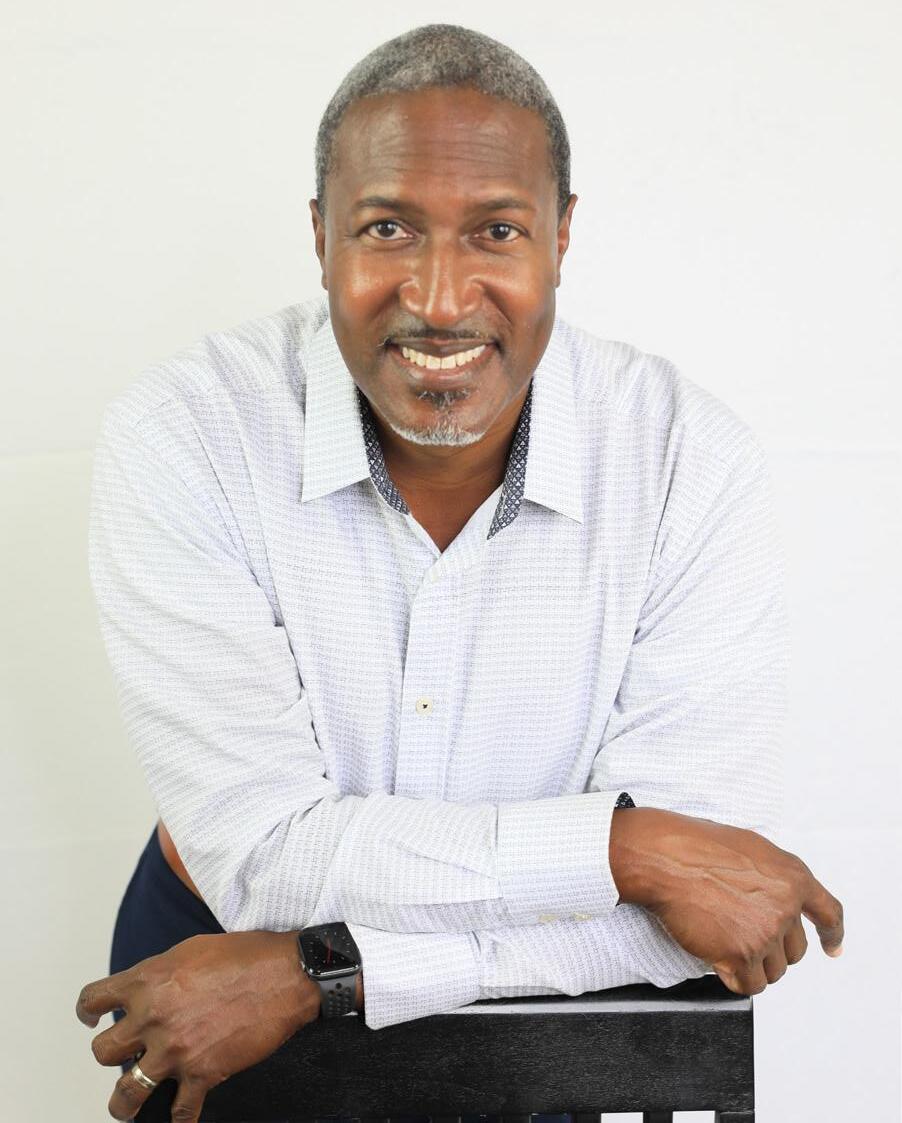
sessions with mortgage lenders, community members and developers to help inform people about everything from business and infrastructure plans to gentrification. Town halls, he says, are another great way to take ownership of one’s community. He sees his role as educating himself so he can educate others.
“I want to bring more African Americans into the space on the mortgage lending side because that’s how (we improve) equality and equity and bring our own communities back up.”
For Keene, systemic problems require systemic solutions. It will take a confluence of policy changes, reparations and new ways to fund rental assistance or homeownership support, she says, to alleviate

housing-related stress.
“I don’t think we can address the mental health costs of this lack of housing without fixing the housing,” she says. “We have to get at the root cause.”
Danya Keene
Photo courtesy of Danya Keene
Nathan Summers
Photo courtesy of Nathan Summers
Black Mental Health Today Spring Edition / 2023 / Volume 7 20 https://ifbmw.org/bmht
Anna Dimond is a journalist and creative based in Los Angeles, California.



BMHT is looking for freelance writers, salespeople and graphic designers to join our magazine family. Prospective writers should send inquiries, resumes and magazine writing samples to LaTonya Summers, Ph.D. at latonya@ifbmw.org • FREELANCE WRITERS • SALESPEOPLE • GRAPHIC DESIGNERS Were HIRING! Black Mental Health Today I scored an Ad With BMHT SCAN TO ORDER YOUR TEXTBOOK TODAY OR CLICK HERE Digital Subscribers Only
COVER / ON RACIAL AMBIGUITY AND MENTAL HEALTH
Research shows people of mixed race –particularly those dealing with the issue of not being Black enough – are more likely to report a mental health illness
Article by Nedra Rhone

When he was 8 years old and hanging out with friends at a treehouse they built on an empty lot in their Chicago neighborhood, Che Calix recalled the first time someone referred to him as an animal.
An older girl pointed to each person in their group, naming their race or ethnicity.
When she got to Calix, she says, “You are a zebra.”
She was referring to his parents. His mom was white and his dad was Black.
“I remember being really upset about being compared to an animal,” says Calix.
His biological father was not in his life, but his mother made sure Calix understood his heritage and gave him positive reinforcement about who he was. Yet, “even though I was hearing those messages, that was not something that was instilling any pride in me at all,” he says.
As an adolescent, he often felt uneasy in social situations when he didn’t know how people were going to respond to him. “A lot of that is tied to the fact that I hadn’t completely solidified my identity and figured out who I was,” he says.
It would take many years, affirmation from Black friends and, ironically, attending a mostly white college to help him find space for his identity.
“The way I identify myself is Black,” he said. “If someone asks if I am mixed, I am quick to acknowledge that I have a white mom, but my experience of walking through the world is completely different than the experience of a white person.”
In his work as a school counselor, Calix has drawn heavily on his experience developing his racial identity when dealing with students who feel insecure or don’t feel good about themselves. “It is easy for me to relate to them,” he says.

On the whole, students today seem to be doing a better job of defining themselves, he says. “I am sure they are still forming their racial identity, but they are able to articulate who they are in a way that I wasn’t until I was much older.”
That’s likely because the 2020 Census revealed more Americans than ever before are claiming their biracial and multiracial identities. The population of Black or African Americans in
combination with another race group grew by 88.7% from 2010 to 2020, according to the data.
The population identifying as white in combination with Black or African American rose by 1.2 million people, a 67.4% increase over 2021. Those who identify as Black or African American and some other race (other than white) increased by 722,383 people for a change of 230% over the 2010 data.
The increases are likely due to improvements in the way the census captures data related to race and ethnicity, allowing people to more accurately report how they selfidentify.
‘Rejected on both ends’
But while the numbers reflect the progress that has been made in defining racial identity statistically, data can’t capture the experiences of biracial and multiracial Americans as they navigate their identities in a world that insists on telling them who they are.
“Unless Black people are purely white looking, they tend to get coded as the other,” says Tyce Nadrich, licensed mental health counselor and professor of clinical mental counseling at Malloy College whose dissertation and continued work centers on the experiences of racially mixed people of color.
Carisa Butler Photo courtesy of Carisa Butler
Tyce Nadrich Photo courtesy of Tyce Nadrich
Black Mental Health Today Spring Edition / 2023 / Volume 7 22 https://ifbmw.org/bmht
It took Nadrich 32 of his 37 years to craft his identity as a biracial black man. “I am biracial, but blackness is central to my identity,” he says.

Nadrich was raised by his Black mother who always taught him that he was Black, but what she didn’t teach him was that Black people wouldn’t always affirm his blackness.
The message he often received from Black people was that he was not authentic enough to be Black even though blackness is all he knows.
“There is this idea that I am not enough,” he says. “How do people find their social and interpersonal homes when they are often being rejected on both ends?”
Multiracial youths who must navigate school and peer relationships as they are coming to understand their identity and navigating puberty may be particularly at risk. At least one study has shown that, compared to white students, mixed-race students have higher rates of poor mental health and fewer protective factors.
Growing up in New York, Carisa Butler felt at home in a community where many children looked like her and were born to biracial unions with a white mother and a Black father.
Her parents parted when she was 3 years old and she was raised with her mother’s side of the family. Losing her mother at age 13 made her hold on to that part of her identity even more fiercely, she says.
As she moved into her teen and adult years, she viewed herself as biracial but there didn’t always seem to be space for that in the world. Insecurity creeped in to her social interactions, especially with boys. “I struggled with some feelings of, “Do I fit in?’ ‘If I like this person am I Black or white or biracial or ethnic enough or too much for them to like me back?’” she says.
When she moved to the South, those feelings of judgment grew more intense. “I married a white man, I went to a white college and my oldest friends are predominantly white,” she says.
Finding a safe space to talk
Our identities are a mix of internal and external messages, Nadrich says, and we should not assume that biracial and multiracial people, even as adults, have it all figured out.
One of the most important things to do is allow biracial and multiracial people to speak about their authenticity. Listening to those experiences in social situations where they are asked, “What are you?”
“Where are you from?” presents an opportunity to broach the subject.
We are at a place now where biracial and multiracial people have more access to people who have similar experiences. When they hear those stories, they learn it’s OK to talk about their own experience, he says.
Those conversations may take place with a therapist, but they are equally likely to start with friends.
Therapists should open the door by asking clients who identify as biracial or multiracial if that is a significant part of their lived experience they may want to address in therapy.
Finding a safe space to talk and develop the language to describe their experiences is vital to their wellbeing.
Inpact on mental health
The constant negotiating and renegotiating of identity can impact one’s mental health, he adds.
“We have a good amount of research on the role of healthy identity development. When people are not in an environment where they can develop a strong sense of self, we see symptoms of depression and anxiety,” Nadrich notes.
People of two or more races are more likely to report a mental health illness in a given year, according to data from the Anxiety and Depression Association of America. The percentage of people with mental illness identifying as multiracial is 25%.
Though she most strongly connected with her Italian ethnicity – the meatballs her maternal grandmother would offer when she arrived home from school or the lasagna her family ate for Christmas dinner – she never identified as white.
“I could be black, mixed or biracial but never white,” she says. “I think people make assumptions about who I am, who I want to be and who I identify with.”
She is happy to now live in a community that is diverse, and she has a diverse group of friends with whom she can have deep conversations about identity.
“It’s about connecting with others and hearing a common narrative, reading books and getting into therapy with someone who knows what they are doing,” Nadrich says.
Che Calix
Photo by Che Calix
Nedra Rhone is a columnist in metro Atlanta who writes about a range of topics that impact marginalized people and communities.
TRIPPING TOWARD WELLNESS
Use of ketamine for those with treatment-resistant depression grows. Practitioners stress importance of screening patients before prescribing it
Article by Rudri Bhatt Patel
Dr. Nathan Carter, a psychiatrist in Concord, North Carolina, didn’t know if ketamine would work for his patient suffering from treatment-resistant depression. Still, he wanted to see if an injection of the psychedelic could make a difference.
After administering ketamine to this patient, Carter was amazed by the results. “In a matter of 24 to 36 hours, his depression was remarkably better. Before the shot, he was bed bound and didn’t eat. Two days after the shot, he asked for double portions of food and talked about his family,” Carter says.

Carter’s experience in 2019 with his patient’s complete turnaround after receiving ketamine isn’t an isolated incident. A study in Current Neuropharmacology indicates ketamine does make a marked difference in those suffering from treatment-resistant depression. Ketamine is likely here to stay, as evident by clinics where ketamine is administered popping up nationwide in the last few years.
Potential form of therapy
Evaluating whether an individual has treatment-resistant depression is an important step in determining whether ketamine will be a potential form of therapy.
Tamia Pleasants, a licensed clinical professional counselor and owner of NyLu Therapeutic Solutions in Maryland, has a particular metric to diagnose treatment-resistant depression.
“When a patient comes in complaining of at least two years of feeling depressed, and they have tried a variety of things with little or no movement or alleviation of those symptoms,” it may be time to consider alternative treatments like ketamine. Typically, Pleasants has noticed these individuals have faced depression for several years, and medications may help for a few months, but then, she says, the cycle of “low mood, social withdrawal, tearfulness and hopelessness” appears again. Sometimes, years of medication and talk therapy haven’t worked.
Adequately screening depression
Licensed psychologist Gabrielle Jones, Ph.D., and owner of Steady LLC in California, believes that in BIPOC communities, there is a responsibility to ensure an individual is not misdiagnosed. “(The term) depression is thrown around, just
haphazardly, but it may be that there is race-based trauma, and it’s important to really parse out if it’s PTSD,” she says.
Carter also stresses screening patients before recommending ketamine as an option. “We want to make certain there is no history of psychosis or substance use disorder,” Jones says.
Pleasants agrees with Carter and Jones. A nurse practitioner on her staff screens patients for drugseeking behavior and other mental illnesses where ketamine wouldn’t be an appropriate solution. Also, the nurse practitioner reviews the medical history to “make sure the patient isn’t taking any other medications,” Pleasants says, since other drugs may interfere with ketamine’s effectiveness.
How ketamine works
Ketamine has been effective for many, Carter says, because of how it works. Instead of increasing serotonin levels the way traditional antidepressants do, ketamine works with a neurotransmitter called glutamate. A 2020 study in Therapeutic Advances in Psychopharmacology found working with this neurotransmitter impacts mood. “This is why we see a change in people who are on ketamine within a matter of hours because it reduces anxiety and impulsivity,” he says.
Although the FDA has approved the nasal spray called Spravato, which is a derivative of ketamine, other uses of ketamine are prescribed offlabel and available through pills and intramuscular injections.
Administering ketamine
In Pleasants’ experience, ketamine is usually effective within four to six sessions. Patients are given an injection, like a flu shot, and dosage depends on the individual. Pleasants generally sees a shift in symptoms around the third or fourth session. “Patients start to invite different thoughts, feelings and actions,” she says. Pleasants reminds her patients that sometimes the shift is subtle
FEATURE/
Dr. Nathan Carter
Black Mental Health Today Spring Edition / 2023 / Volume 7 24 https://ifbmw.org/bmht
Photo courtesy of Dr. Nathan Carter
and may not appear the way they expected.
Most patients come in for one session every seven days over a sixweek period and then wait about two months to schedule their first maintenance injection. Jones has noticed most patients feel better around the month marker, but she cautions that this is anecdotal
to be effective, should be used with another form of therapy, whether it is eye movement desensitization and reprocessing, cognitive behavioral therapy or somatic therapy. Integrating another therapy is a holistic approach, Pleasants says, because it targets healing in the mind and body.
In considering the use of ketamine as a treatment for marginalized communities, Jones cautions that, “there is a healthy distrust of the medical industry of putting something in their body that is foreign.” Citing
Another barrier is money. Ketamine injections could cost hundreds of dollars. “If you don’t have top-tier insurance, you’re just not going to be able to afford it,” he says.
Pleasants knows ketamine is not going anywhere. “I think there’s a lot of growth with psychedelic-assisted therapy. This is a good thing because I think it is a nice addition, especially when talk therapy alone cannot help the patient.”
Use of ketamine in BIPOC communities
In considering the use of ketamine as a treatment for marginalized communities, Jones cautions that, “There is a healthy distrust of the medical industry of putting something in their body that is foreign.” Citing the history of Tuskegee, where Black men died because the government was testing them, or the unapproved vaccines given to marginalized children in Los Angeles in 1989 that caused serious neurological damage, Jones says, “There are several examples where the medical industry has either manipulated or lied to communities of color and caused harm.”
evidence. Patients will receive at least six injections and can return for maintenance shots later if necessary.
Rate of success of ketamine
Carter administers ketamine in an inpatient psychiatric setting and has been using intramuscular ketamine since 2019. In terms of success with his patients, at least 20 individuals who have been hospitalized due to treatment-resistant depression and other mental health issues have been discharged after receiving ketamine.
Not all are success stories, however. Some of Jones’ patients complain they don’t “feel like themselves” after a couple of sessions with ketamine. Pleasants adds, “Sometimes they just don’t believe it is working because they are looking for a grand gesture of how they should feel, and there’s a lot of expectation, and even though I do my best to manage that,” they want to discontinue using ketamine.
Pleasants recommends that ketamine,
the history of Tuskegee, where Black men in Alabama died because the government was testing them, or the unapproved vaccines given to marginalized children in Los Angeles in 1989 that caused serious neurological damage, Jones says, “There are several examples where the medical industry has either manipulated or lied to communities of color and caused harm.”
When Jones talks to a client of color about ketamine treatment, she says, “I am very aware and intentional about presenting it to them in a way that promotes safety and trust in my recommendation.”
Carter believes some barriers are based on unfamiliarity with the treatment, so there must be outreach.
When Jones talks to a client of color about ketamine treatment, she says, “I am very aware and intentional about presenting it to them in a way that promotes safety and trust in my recommendation.”

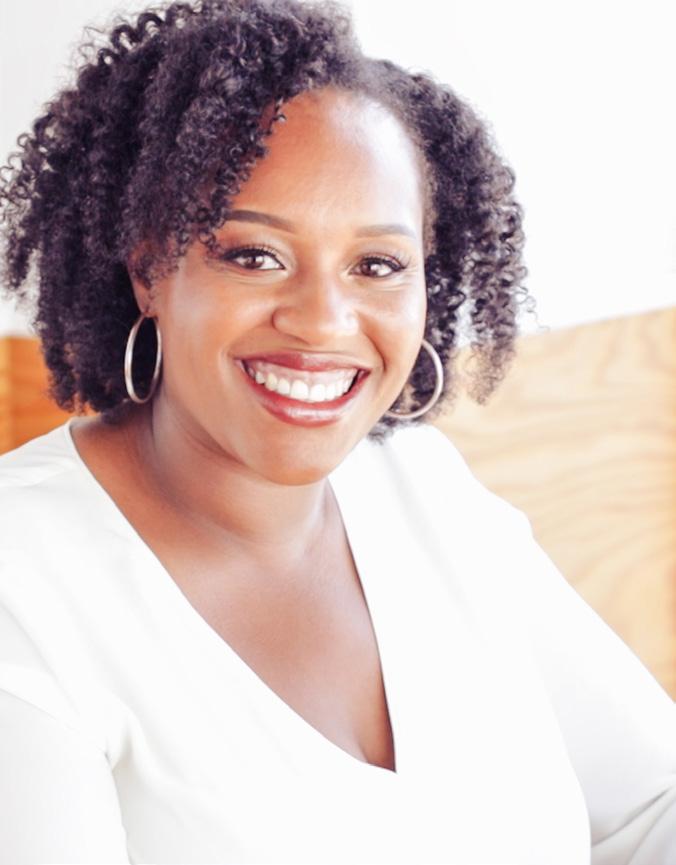
Carter believes some barriers are based on unfamiliarity with the treatment, so there must be outreach. Another barrier is cost. Ketamine injections could cost hundreds of dollars. “If you don’t have top-tier insurance, you’re just not going to be able to afford it,” he says.
Pleasants knows ketamine is not going anywhere. “I think there’s a lot of growth with psychedelic-assisted therapy. This is a good thing because I think it is a nice addition, especially when talk therapy alone cannot help the patient,” she says.
Rudri Bhatt Patel is a writer, editor and educator whose works have been published by regional and national outlets.
Gabrielle Jones
Photo courtesy of Gabrielle Jones
Tamia Pleasants
Photo courtesy of Tamia Pleasants
Black Mental Health Today Spring Edition / 2023 / Volume 7 25 https://ifbmw.org/bmht
Mentally? Stressed

...Take A SPring BreAk

JOIN THE MOVEMENT
The #1MillionWell Movement is an aim to ensure the mental wellness of 1 million Black people through the Black Mental Health Symposium (BMHS). When mental health professionals, educators, students, practitioners, church and community leaders are equipped with culturally-specific interventions they are able to conduct work that improves the mental wellness in Black communities. Using what we learn with our clients, students, employees, supervisees, church and community members we will be able to ensure the mental welless of 1 million Black people.
ORDER YOUR T-SHIRT TODAY FROM AMAZON GET FREE SHIPPING!
























 By Rudri Patel
By Rudri Patel




 Article by LaTacia Ruff
Article by LaTacia Ruff
















